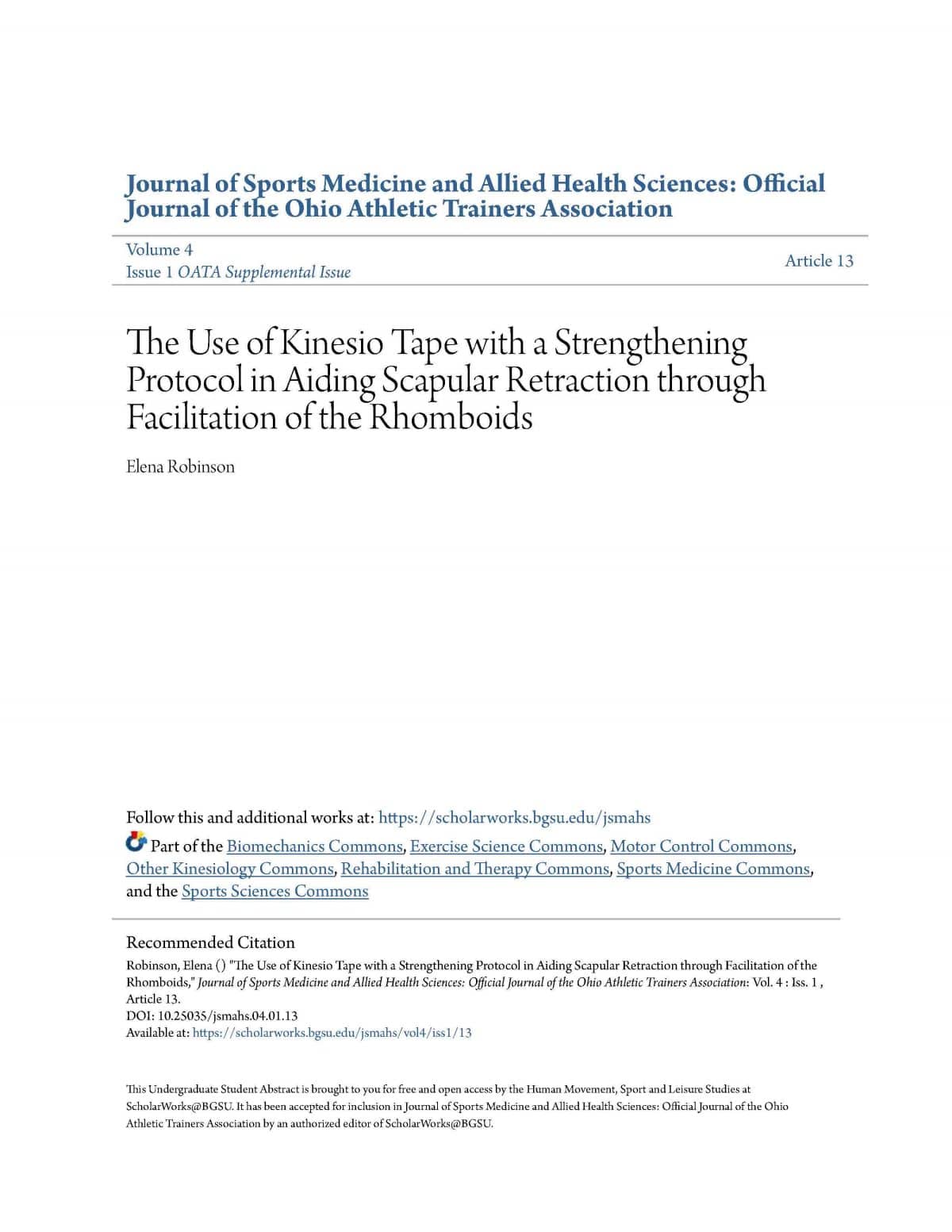Journal of Sports Medicine and Allied Health Sciences: Official Journal of the Ohio Athletic Trainers Association. Volume 4 Issue 1 OATA Supplemental Issue Article 13
The Use of Kinesio Tape with a Strengthening
Protocol in Aiding Scapular Retraction through
Facilitation of the Rhomboids
Elena Robinson
Department of Athletic Training, Marietta College
CONTEXT
Rounded shoulder posture (RSP) is a type of poor upper body posture that can lead to other biomechanical changes of the body, as well as pathological issues.1-3 Kinesio Tape (KT) facilitation, along with a strength protocol, on the rhomboid muscles will aid in scapular retraction.
OBJECTIVE
To examine immediate effects of KT facilitation of the rhomboid muscles as well as postural changes, over time, when KT facilitation is combined with a strength protocol on the rhomboid muscles.
DESIGN
Repeated measures, randomized experimental study.
SETTING
Division III liberal arts college.
PARTICIPANTS
11 participants with RSP (6 male, 5 female, age 28.8 + 13.0 years).
INTERVENTION
Pre-Test performed that included 3 exercises, 3 sets of 10 reps each, followed by the application of KT on the rhomboid muscles. Repeat of the three exercises followed.
Strength protocol performed four times over next two weeks, with the fourth time becoming the post-test. Static videos of participant’s RSP taken throughout the pre and post-test. Videos taken during each exercise to assess dynamic posture in pre and post-test.
OUTCOME MEASURES
Dartfish Motion Analysis Software (Dartfish Inc., Fribourg, Switzerland) used to analyze immediate differences in RSP, as well as differences over the course of the pre-test to the post-test. Used independent samples t-test and a mixed-model ANOVA with a repeated measures factor in SPSS.
RESULTS
No significant immediate change in static postures (p > .05). Comparisons of experimental and control groups, effect of intervention over time, and interaction effects were not significant (p < .05).
CONCLUSION
KT alone, or KT with a strengthening protocol for the rhomboids, may not be an effective solution for RSP. Furthering testing needs to occur with greater number of participants.
KEY WORDS: kinesio tape, rounded shoulders, strengthening
Robinson, Elena () “The Use of Kinesio Tape with a Strengthening Protocol in Aiding Scapular Retraction through Facilitation of the
Rhomboids,” Journal of Sports Medicine and Allied Health Sciences: Official Journal of the Ohio Athletic Trainers Association: Vol. 4 : Iss. 1 ,
Article 13.
DOI: 10.25035/jsmahs.04.01.13
Available at: https://scholarworks.bgsu.edu/jsmahs/vol4/iss1/13




